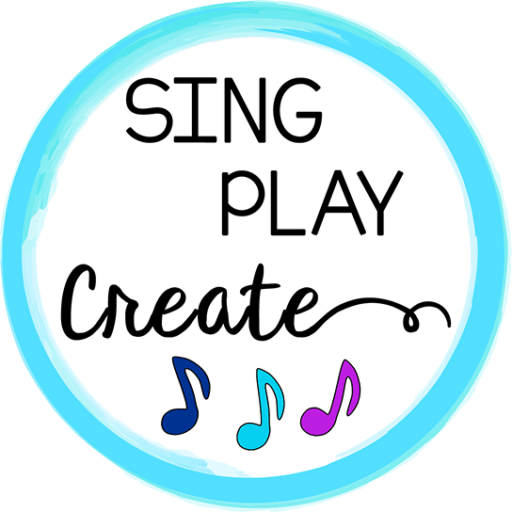


Social distancing? No problem! I am sharing some music class teaching ideas for “Doggie, Doggie Where’s Your Bone?” “Doggie, Doggie Where’s Your Bone?” Is a favorite game song for elementary children and a favorite of Kodaly music educators. I use the song in a variety of ways to encourage learning and practicing sol-la-mi patterns, independent singing and social skills like “taking turns”.
You can also use the materials in “Doggie, Doggie Where’s Your Bone?” music lesson to strengthen literacy skills. Homeschoolers will appreciate the music, reading and writing connections.
Read more about integrating literacy and music here: How to Incorporate Music Activities that Strengthen Literacy Skills
So keep reading to get the music class teaching tips on how to use these materials during the “Covid Pandemic”.
Every music lesson is an opportunity to reinforce the steady beat.
You can have your students pat their knees as you chant or sing the song.
Or, have them use a prop like a scarf, bean bag, rhythm stick or stuffed animal to show the beat.
You may want to put them in a circle and walk around the outside as you chant or sing the song.
This way your students will know that you are watching them play the beat.
Now you’ll have a chance to demonstrate the half note:
And, I like to change my voice to sound like a dog on the last line.
I decided that I wanted my students to show rhythm using a different action than clapping. I use the word “tapper” to describe how I want my students to play the rhythms. I save “clapping” for body percussion and movement activities.
When we get out our tappers, we are professional rhythm player. I hold one hand out as if waiting for something- it’s flat, like a drum, and then I tap with 2 fingers on my tapper. ( I can’t remember who showed this trick to me- but it works!)
I tap the lines and ask my students to echo me.
Here’s how it looks in the presentation:
After I go through each line, I’ll ask some questions about the note values.
“Does anyone know which word has a half note?”
If they can’t remember, I’ll chant one of the lines with the half notes.
Since I use the presentation, it will be on the screen- most likely someone will look at the screen and discover the half note. (But you never know!)
Then I’ll have everyone chant and tap together.
If I’m just focusing on the rhythms for that day because I’m going to have them play the game, then I will ask if there’s anyone who wants to play the rhythms alone.
After that, we play the game.
Try some of these music class teaching for the melody:
Even if you can’t ‘sing’ in your classroom, your students can have a blast learning this fun song and playing the game.
Our students will just have to wait to learn the notes later next spring.
As I said, I like to do units where students can easily transition from one activity to the next using the same materials. It does take some creativity, but students like the repetition and then the variety of activities they can do with the song.
After we learn melody, I can have them play the song on xylophones.
Try breaking students into groups, have each group do something different in the song.
Begin with the body- stomp the beat, tap the rhythms on the chest, sing the melody.
Then move into other opportunities to play the song. Perhaps Beat on a woodblock, or drum, rhythm sticks-rhythm and xylophone for melody.
Next give the students opportunities to create ostinato, or other body actions for the parts.
Providing time for students to explore ways to show the music does take time, but it’s so worth it!
If you are HOMESCHOOLING, then you’ll love having the lyrics in bold for students to practice reading. To support literacy skills, have them memorize the lyrics and do the worksheets.
No matter what, these music class teaching ideas, along with the VIDEOS, audio and presentation files will help you give your students a variety of learning opportunities to develop beat, rhythm and pitch/melody skills.
I hope that these music class teaching ideas help you with music lesson “Doggie, Doggie Where’s Your Bone?”
Please share this post!

Hi there! I’m Sandra, one of the authors behind Sing Play Create. My goal is to provide teachers with interactive resources and activities to improve the effectiveness of their teaching and enhance student learning.

© 2022 Sing Play Create. All Rights Reserved.